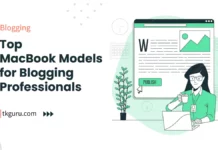Advertisements
Ratings

Personal Finance Blog Post Ideas for Bloggers – In today’s fast-paced world, personal finance education plays a crucial role in ensuring financial stability and success.
As a personal finance blogger, you have the unique opportunity to empower your readers with valuable insights and knowledge that can help them make informed financial decisions.
In this article, we’ll explore a wide range of personal finance blog post ideas that can engage and educate your audience on matters related to budgeting, saving, investing, debt management, financial goals, side hustles, and more.
Contents
1. Personal Finance Blog Post Ideas
1. Budgeting and Money Management
- Creating a Personal Budget: Guide your readers through the process of creating a personalized budget. Provide step-by-step instructions on categorizing expenses, setting financial goals, and tracking income and expenses.
- Tips for Cutting Expenses: Share practical tips and strategies for trimming unnecessary expenses from daily routines. Offer advice on negotiating bills, finding cost-effective alternatives, and making conscious spending choices.
- Tracking Your Spending: Introduce tools and methods for tracking daily expenditures. Encourage readers to identify patterns in their spending habits and suggest ways to make adjustments.
Table: Sample Monthly Budget
| Expense Category | Allocated Amount ($) | Actual Spending ($) |
|---|---|---|
| Housing | $1,200 | $1,180 |
| Transportation | $300 | $280 |
| Groceries | $250 | $265 |
| Entertainment | $100 | $120 |
| Savings | $200 | $210 |
| Total | $2,050 | $2,055 |
2. Saving and Investing
- Building an Emergency Fund: Emphasize the importance of having an emergency fund for unexpected expenses. Provide guidance on setting aside an appropriate amount and explain the role of emergency funds in financial security.
- Introduction to Investing: Break down the basics of investing, including stocks, bonds, mutual funds, and exchange-traded funds (ETFs). Explain concepts like risk and return, and encourage readers to start investing early.
- Retirement Planning: Offer insights into retirement savings options, such as employer-sponsored 401(k) plans and individual retirement accounts (IRAs). Illustrate the benefits of compound interest over time.
Table: Retirement Savings Comparison
| Retirement Account | Annual Contribution Limit | Average Annual Return (%) |
|---|---|---|
| 401(k) | $19,500 | 7 |
| Roth IRA | $6,000 | 8 |
3. Debt Management
- Paying Off Debt Faster: Present strategies like the debt snowball and debt avalanche methods for paying off debts efficiently. Explain how focusing on high-interest debts first can lead to quicker results.
- Understanding Credit Scores: Demystify credit scores by explaining how they are calculated and the factors that influence them. Provide tips for improving credit scores and maintaining healthy credit.
- Dealing with Student Loans: Offer guidance to recent graduates and students on managing student loan debt. Discuss options for repayment plans, loan forgiveness, and refinancing.
Table: Debt Repayment Comparison
| Debt Repayment Method | Total Debt Amount ($) | Monthly Payment ($) |
|---|---|---|
| Debt Snowball | $15,000 | $300 |
| Debt Avalanche | $15,000 | $275 |
4. Financial Goals and Milestones
- Setting Financial Goals: Guide readers through the process of setting SMART (Specific, Measurable, Achievable, Relevant, Time-Bound) financial goals. Encourage them to create short-term and long-term objectives.
- Buying Your First Home: Provide a comprehensive overview of the home-buying process, including saving for a down payment, mortgage options, and factors to consider when choosing a property.
- Starting a Family: Discuss the financial considerations of starting a family, from managing child-related expenses to saving for education. Offer practical advice for financial preparedness.
Table: Savings Goals Tracker
| Financial Goal | Goal Amount ($) | Current Savings ($) | Remaining to Save ($) |
|---|---|---|---|
| Emergency Fund | $10,000 | $6,000 | $4,000 |
| Home Down Payment | $50,000 | $15,000 | $35,000 |
| Education Fund | $30,000 | $8,000 | $22,000 |
5. Side Hustles and Additional Income
- Exploring Side Hustles: Share a variety of side hustle ideas that can help readers earn extra income. Include gig economy work, freelancing, tutoring, and more.
- Passive Income Streams: Explain the concept of passive income and offer ideas such as dividend investing, rental properties, and creating digital products for sale.
- Monetizing Your Blog: Discuss strategies for turning your personal finance blog into a revenue source. Include affiliate marketing, sponsored content, and selling digital resources.
Table: Side Hustle Options and Earnings
| Side Hustle | Average Monthly Earnings ($) |
|---|---|
| Freelance Writing | $500 |
| Dog Walking | $300 |
| Dividend Investing | $200 |
6. Financial Literacy and Education
- Teaching Kids About Money: Offer tips for parents on introducing financial concepts to children, including saving, budgeting, and the value of money.
- Adulting 101: Financial Skills: Create a guide for young adults on essential financial skills, such as filing taxes, managing credit, and investing.
- Avoiding Financial Scams: Educate readers on common financial scams and provide guidance on recognizing and avoiding fraudulent schemes.
7. Success Stories and Inspirational Journeys
- Debt-Free Success Stories: Share real-life stories of individuals who successfully paid off significant amounts of debt. Highlight their strategies and determination.
- Achieving Financial Independence: Feature stories of people who achieved financial independence through smart planning, disciplined saving, and strategic investing.
- Blogger Spotlight: Highlight successful personal finance bloggers and their journeys to financial stability. Share their insights and lessons learned.
Conclusion
Incorporating these diverse personal finance blog post ideas into your content strategy can provide your readers with valuable knowledge, practical tips, and actionable steps towards achieving financial well-being.
Remember, personal finance is a journey, and your role as a blogger is to guide and empower your audience to make informed choices that lead to financial success.
As you create your blog posts, ensure that your content is easily understandable, relatable, and SEO-friendly.
By catering to your readers’ needs and addressing their financial concerns, you’ll establish yourself as a trusted resource in the realm of personal finance.
Personal Finance Blog Post Ideas for Bloggers FAQs
What Are the Top Budgeting Strategies for Beginners?
Budgeting is crucial for financial success. In a blog post, you can discuss popular budgeting methods like the 50/30/20 rule, envelope budgeting, or zero-based budgeting. Explain how each works and provide tips for beginners to get started.
How Can I Save Money on a Tight Budget?
Write a blog post with practical tips on saving money when finances are tight. Offer advice on cutting unnecessary expenses, finding discounts, meal planning, and utilizing cashback and rewards programs.
What's the Best Way to Pay Off Debt Faster?
Address this common concern by outlining various debt repayment strategies such as the debt snowball and debt avalanche methods. Explain the pros and cons of each and help readers choose the one that suits their situation.
How to Invest Wisely for Retirement?
Create a comprehensive guide on retirement investing, discussing different investment vehicles like 401(k)s, IRAs, and taxable accounts. Offer insights on asset allocation, risk tolerance, and the power of compound interest.
What Are the Essential Steps to Build an Emergency Fund?
Detail the importance of having an emergency fund and provide a step-by-step guide on how to create one. Discuss how much to save, where to keep the funds, and share real-life examples of why emergency funds are crucial.
| Web Hosting | Website |
| WordPress | Google Adsense |
| SEO | Affiliate Marketing |
| Blogging | YouTube |
Recent Posts
- Windows vs Mac: Choosing the Ideal Laptop for Your Needs
- 10 Best Budget Friendly Laptops for Bloggers with Impressive Performance
- Top MacBook Models for Blogging Professionals
- 10 Best Laptops for Content Creators in 2023
Related Tags
trending personal finance topics, finance blog topics in hindi, financial topics to discuss, financial content ideas, hot topics in financial planning, financial planning topics by-month, personal finance blogs, interesting personal finance topics,






